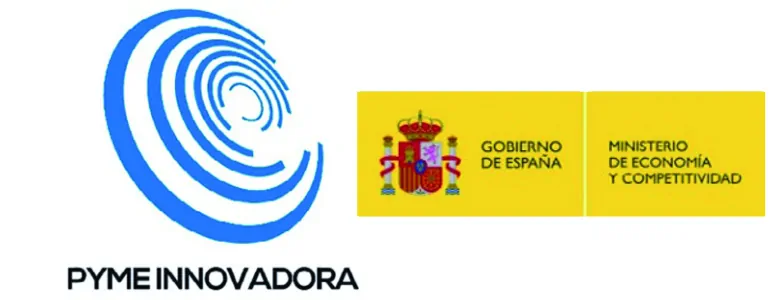
HORIZON EUROPE

 Europeo
Europeo
Expected Outcome:Successful proposals will support researchers and innovators to upgrade technological solutions for biogenic gaseous carbon capture and use (CCU[1]) and the production of sustainable circular non-fossil-based products, in line with the objectives of the European Climate Law and with the initiatives outlined in the ‘Sustainable Carbon Cycles’ Communication from the European Commission[2]. The successful proposals will contribute to mitigating climate change along the bio-based industrial systems.
Project results should contribute to the following expected outcomes:
Higher carbon removal[1] potential[4] of bio-based systems.Improved environmental performances of bio-based processes.Public awareness and acceptance of bio-based solutions.Support market uptake growth and acceptance of scalable bio-based solutions. Technology Readiness Level (TRL): Activities are expected to achieve TRL 6 by the end of the project – see Horizon Europe General Annex B.
Expected EU contribution per project: It is estimated that a contribution of EUR 5 million would allow these outcomes to be addressed appropriately. Nonetheless, this does not preclude...
ver más
Expected Outcome:Successful proposals will support researchers and innovators to upgrade technological solutions for biogenic gaseous carbon capture and use (CCU[1]) and the production of sustainable circular non-fossil-based products, in line with the objectives of the European Climate Law and with the initiatives outlined in the ‘Sustainable Carbon Cycles’ Communication from the European Commission[2]. The successful proposals will contribute to mitigating climate change along the bio-based industrial systems.
Project results should contribute to the following expected outcomes:
Higher carbon removal[1] potential[4] of bio-based systems.Improved environmental performances of bio-based processes.Public awareness and acceptance of bio-based solutions.Support market uptake growth and acceptance of scalable bio-based solutions. Technology Readiness Level (TRL): Activities are expected to achieve TRL 6 by the end of the project – see Horizon Europe General Annex B.
Expected EU contribution per project: It is estimated that a contribution of EUR 5 million would allow these outcomes to be addressed appropriately. Nonetheless, this does not preclude submission and selection of a proposal requesting different amounts
Scope:The European Union has established the European Climate Law, having as objectives to become climate resilient and economy-wide climate neutrality by 2050, with the aim to achieve negative emissions thereafter. To achieve these objectives, the circular economy and the sustainable bioeconomy sectors need to promote technological solutions for carbon capture and use (CCU) and the production of sustainable renewable-carbon-based products.
Proposals under this topic should:
Develop new or improve existing innovative CCU processing and conversion of circular gaseous carbon emitted from bio-based industry. These conversion steps can include, e.g., intensified use of industrial (bio)technologies tailored to the composition and characteristics of the exhaust emissions from existing and emerging processing of bio-based feedstock.Provision for the project integrating ‘safe-and-sustainable-by-design’ generic criteria and framework considerations[5], in line with the EU Chemicals strategy for sustainability.Improve the efficiency and circularity of the bio-based industry to minimise process losses.Apply innovative design of circular bio-based products in the scope of CBE, for example safe and sustainable by design bio-based products[5] and solutions for specific new applications, and/or with carbon storage capacity and/or low carbon footprint to substitute non-circular, fossil-based, energy-intensive or carbon-intensive product, and/or replacing toxic and hazardous substances in industrial processes and in final products and/or circular-by design bio-based products to allow for reuse, recycling, composting and biodegradation (in specific environments and conditions).Improve the environmental performances of bio-based processes through the capture, fractionation, extraction, and conversion of gaseous carbon from the exhaust flows, and recirculation as much as possible, thus minimising pollutant emissions from the plant.Design and apply an integrated monitoring system of the carbon removal[1] potential of the developed technologies, to allow for reporting and verification to be recognised as contributing to EU climate and environmental objectives (following the upcoming European certification framework[8]). The monitoring systems for carbon removal should include factors such as e.g., the storage time in bio-based materials, the risk of storage reversal, the uncertainty of the measurement, or the risk of carbon leakages increasing greenhouse gas (GHG) emissions elsewhere.Apply and/or adapt existing/mature or novel digital technologies, provided that they are instrumental to achieving the project’s outcomes and scope, especially to ensure high standards of resource efficiency and environmental protection. Applications of digital technologies that should be considered in the scope are among the following areas i) chemicals, materials and process design & modelling ii) (real-time) process monitoring and optimisation (including environmental performance) iii) predictive maintenance & plant engineering and iv) data analytics and data management of the CCU technologies in the scope”. (Note) Points i)-iv) should consider the contribution to/from data/feedback loops across circular, bio-based value chains but also coordination of processes among different sectors (especially if symbiosis concepts apply in the project)
Disseminate the outputs and learning outcomes from the project in order to increase the public awareness, and awareness of relevant industry actors, of potential benefits of bio-based solutions.Propose recommendations on opportunities/challenges for targeted stakeholders, including, where possible, national/regional stakeholders, investors and brand owners[1]. Proposals must implement the multi-actor approach and demonstrate the involvement of all concerned key actors in the bio-based systems, such as researchers and technology providers and bio-based industries emitting gaseous carbon. Please see the section Additional requirements in the CBE JU Annual Work Programme 2022[10] for more details.
[1] for a description of the term, see annex Glossary in the CBE JU Annual Work Programme 2022 (https://www.cbe.europa.eu/reference-documents)
[2] https://ec.europa.eu/clima/system/files/2021-12/com_2021_800_en_0.pdf
[3] for a description of the term, see annex Glossary in the CBE JU Annual Work Programme 2022 (https://www.cbe.europa.eu/reference-documents)
[4] The concept of carbon removal is described in the Communication ‘Sustainable carbon cycles’. A quotation from the Communication is included in the Glossary at the end of this document for the term ‘carbon removal’.
[5] The publication of the ’Safe and Sustainable by Design chemicals and materials’ Framework, aiming to the definition of criteria and evaluation procedure for chemicals and materials, is expected to become available by end of 2022. The proposed SSbD framework is expected to assess chemicals and materials following a hierarchical approach in which safety aspects are considered first, followed by environmental, social and economic aspects. Please see also European Commission, Joint Research Centre, Caldeira, C., Farcal, R., Moretti, C., et al., Safe and sustainable by design chemicals and materials : review of safety and sustainability dimensions, aspects, methods, indicators, and tools, 2022, https://data.europa.eu/doi/10.2760/879069
[6] The publication of the ’Safe and Sustainable by Design chemicals and materials’ Framework, aiming to the definition of criteria and evaluation procedure for chemicals and materials, is expected to become available by end of 2022. The proposed SSbD framework is expected to assess chemicals and materials following a hierarchical approach in which safety aspects are considered first, followed by environmental, social and economic aspects. Please see also European Commission, Joint Research Centre, Caldeira, C., Farcal, R., Moretti, C., et al., Safe and sustainable by design chemicals and materials : review of safety and sustainability dimensions, aspects, methods, indicators, and tools, 2022, https://data.europa.eu/doi/10.2760/879069
[7] for a description of the term, see annex Glossary in the CBE JU Annual Work Programme 2022 (https://www.cbe.europa.eu/reference-documents)
[8] https://op.europa.eu/en/publication-detail/-/publication/449e35f3-8821-11ec-8c40-01aa75ed71a1/language-fi/format-XHTML
[9] for a description of the term, see annex Glossary in the CBE JU Annual Work Programme 2022 (https://www.cbe.europa.eu/reference-documents)
[10] https://www.cbe.europa.eu/reference-documents
ver menos
Características del consorcio
 :
La ayuda es de ámbito europeo, puede aplicar a esta linea cualquier empresa que forme parte de la Comunidad Europea.
:
La ayuda es de ámbito europeo, puede aplicar a esta linea cualquier empresa que forme parte de la Comunidad Europea.
Características del Proyecto
Gastos relacionados con el personal que trabaja directamente en el proyecto basado en las horas efectivas dedicadas, basado en el coste empresa y ratios fijos para determinados empleados como los dueños de la compañía.
Pagos a terceros externos para realizar tareas específicas que no pueden ser realizadas por los beneficiarios del proyecto.
Incluyen la adquisición de equipos, amortizaciones, material, licencias u otros bienes y servicios necesarios para la ejecución del proyecto
Gastos diversos como costes financieros, certificados de auditoría o participación en eventos no cubiertos por otras categorías
Gastos generales no asignables directamente al proyecto (como electricidad, alquiler u oficina), calculados como un 25% fijo sobre los costes directos elegibles (excepto subcontratación).
Características de la financiación
Información adicional de la convocatoria
Otras ventajas


